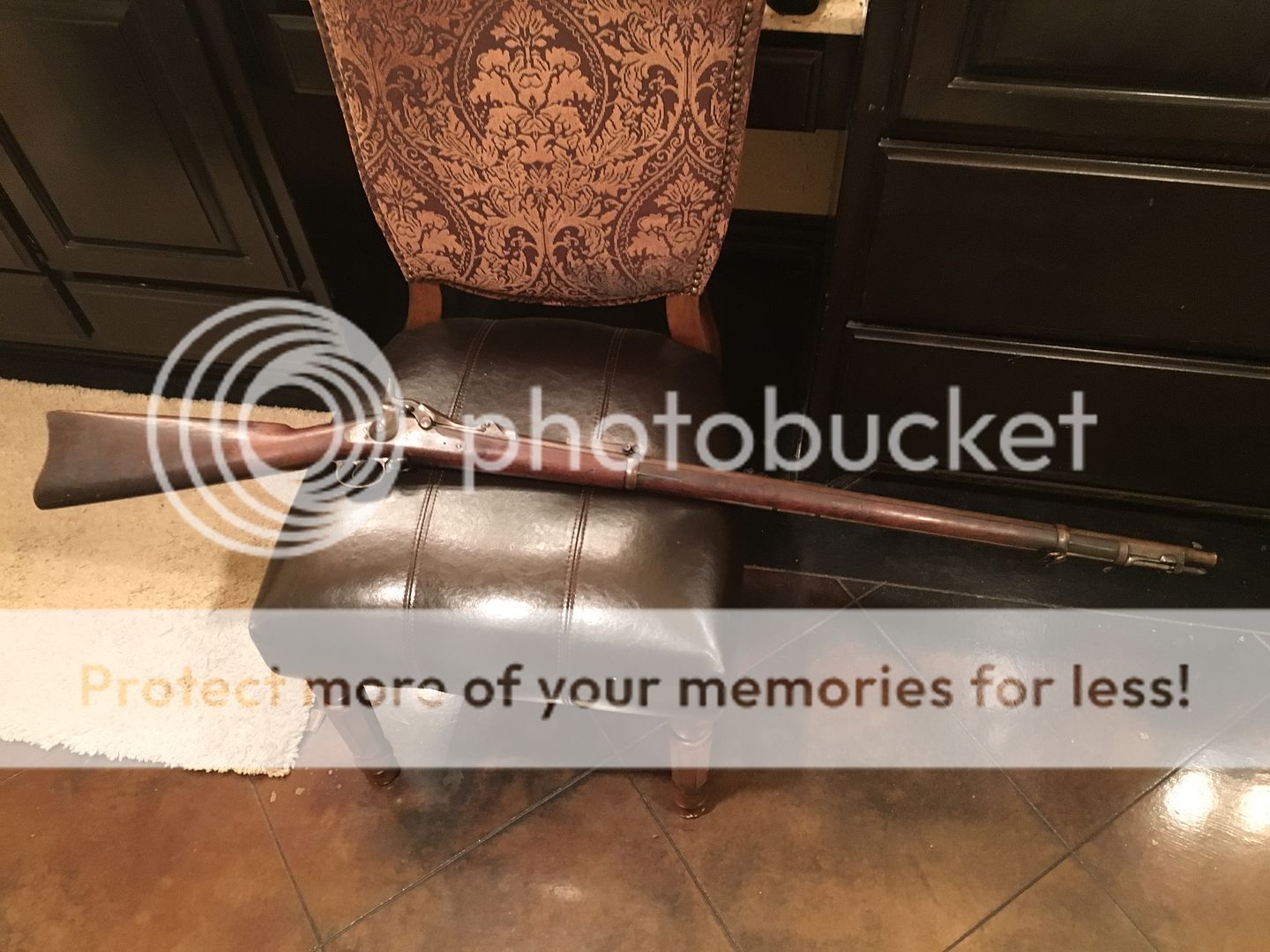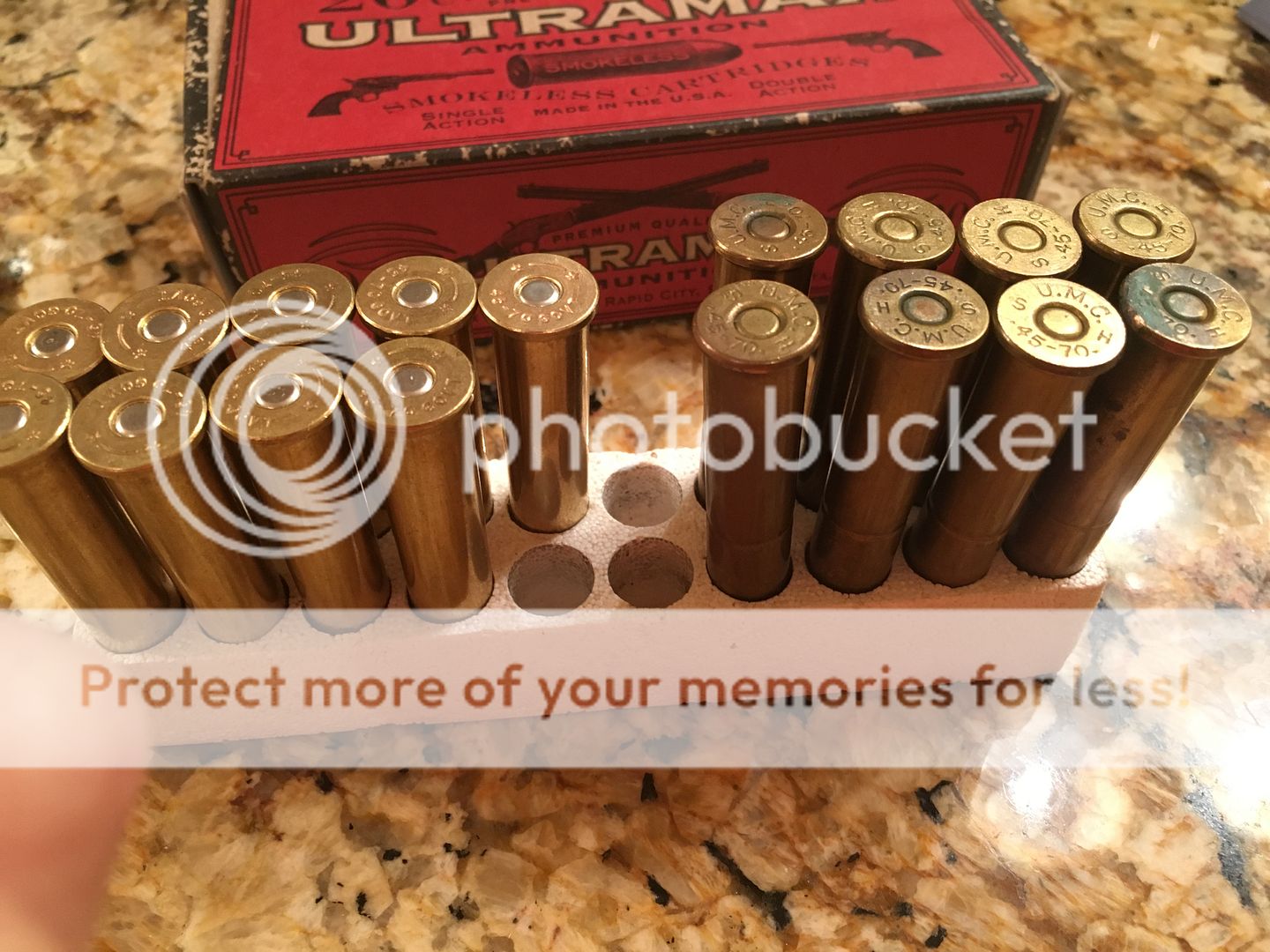Ok...a little range report.
I bought some Ultramax 405 grain low pressure rounds made for the Trapdoor rifle (and cowboy action shooting really) and took this baby out to the range yesterday.
I was really surprised at how soft shooting this gun was with these rounds. It had barely any recoil to speak of. I actually took a shot at my 8 inch spinner from 50 yards and hit it dead center once I figured out how low to shoot. I hit a paper target from a rest and it grouped about 1 inch with a 3 shot group. I don't have pics at this time, and really should load some up of the bore, it's really well preserved.
Overall, this was just an absolute fun gun to shoot. My wife even took a couple of shots, she loved it. It's not even every loud like I was prepared for, really a sweet rifle.
I would imagine things would be different if I have some of the 45-70 500 rounds they used in the testing as mentioned above, and I would bet they aimed like a howitzer to hit those targets at 3800 yards. The Buffington rear sight appears fairly complicated, but if I figured it out I think I could achieve some of the accuracy that is described online in various places. The marksmen using this gun back in the day really had to know how to dial in the elevation and windage for this cartridge on the long range shots.
Still, I own a Henry Original rifle in 44-40, and I would have to say if I were a soldier back in the 1870s, I would think I would have gravitated more towards the higher capacity lever gun in a battle type situation. The Henry is much more practical, but the US military at the time wasn't convinced of its abilities. Then of course came the Krag-Jorgesen 30-40 of 1893 with its bolt action, followed rather quickly by the Springlfeld 1903 chambered in 30.03 (which was quickly switched to the now well known 30.06 that the army used all the way up until the AR-10 in .308 and AR-15 in .223.
But I'm glad I bought this old trapdoor, I'm actually going to the range again tomorrow for testing of it and a m1903.





